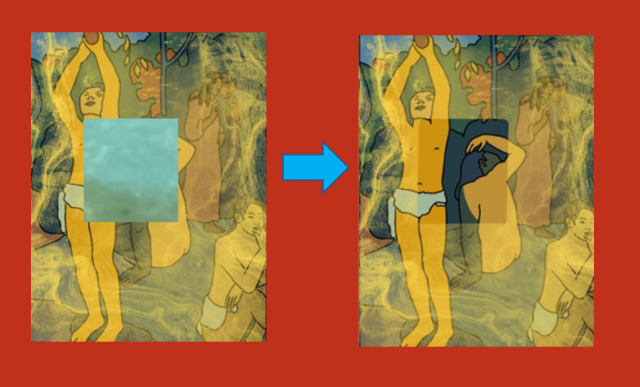The Nonwoven Fabric for Restoring Artwork Safely, Economically, and Sustainably

Bologna, 13 May 2024 - A new method - inexpensive, sustainable and safe - for cleaning sensitive surfaces and assets of historical and artistic interest. It was invented by Giorgia Sciutto and Chiara Gualandi, Professors at the Department of Chemistry ‘Giacomo Ciamician’ of the University of Bologna.
The technology - patented by the University of Bologna - is a nonwoven fabric produced by electrospinning that, together with the controlled application of a solvent, can be used to remove synthetic and natural paints from paintings, sculptures, archaeological finds, archival material or film.
The fabric can simply be placed on the surface to be cleaned: within minutes, the solvent interacts with the layer to be removed, causing it to swell and become absorbed into the fabric itself. This solution reduces the risk of damage to the work being treated and at the same time limits the use of solvent, with great economic and environmental advantages.
‘For cleaning works of art today, disposable cotton swabs soaked in a solvent are mainly used to dissolve or swell the paint layer that needs to be removed’, explain Giorgia Sciutto and Chiara Gualandi. ‘However, this process is time-consuming, requires great care, and often needs to be repeated multiple times. In many cases, it is not even possible to completely remove the paint layer in a single application’.
With the non-woven fabric patented by the University of Bologna, on the other hand, it is no longer necessary to act mechanically on the object to be restored, reducing the risk of ruining the work.
‘The use of the technology also allows the operator a more controlled dosage of the solvent to be used,’ Sciutto and Gualandi add. ‘Controlling the amount of solution is crucial because using too little makes the cleaning less effective, while using too much can damage the underlying paint layers.’
Moreover, the fabric can be used with environmentally friendly solvents, completely eliminating any danger to the operator. It can also work in combination with green solvents, eliminating the dangers for the operator altogether.
Together with Giorgia Sciutto and Chiara Gualandi, Maria Letizia Focarete (Director of the ‘Giacomo Ciamician’ Department of Chemistry), Rocco Mazzeo, Silvia Prati and Francesca Ramacciotti worked on the project for the University of Bologna.





